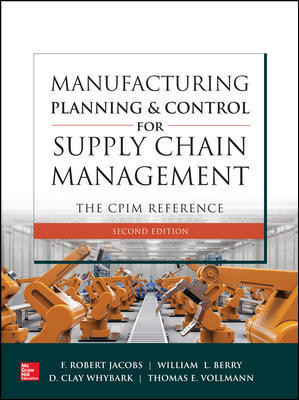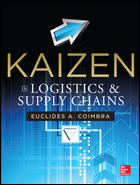
Where should you start to improve quality throughout the supply chain? Whoever you are, whatever your job, it starts with you.
Much has been written about quality throughout the organization. Likewise, much has been written about lean and how the principles of lean are rolled out into a company. So when the subject of supply chain quality is approached, why do so many organizations struggle with how to make substantial and long-lasting improvements to quality issues?
Is it because lean concepts were embraced so late in the game by the purchasing world, or because the sales team in your company is still fighting about how lean applies to them? Perhaps it is because we tend to leave this piece for our quality department to fix? Or is it because we are talking about the extreme breadth of the whole situation; optimizing quality from supplier to customer?
The answer most often identified with this question is a combination of the aforementioned thoughts, plus the fact that we all too often fall back on our old and comfortable ways of project management vs. lean improvement.
Tackling all of the quality issues within the supply chain can be overwhelming. First, there are all of the problems presented by all of our suppliers. Then there are the infinite, and seemingly never-ending, quality issues within our own four walls. And finally, we are faced with the dilemma of responding to our customers’ demands; accepting the fact that the customer is always right (or are they?); and then attempting to work around these issues so as not to upset the customer or lose sales.
So where should you start to improve quality throughout the supply chain? How about starting with you? Whoever you are, whatever your job is, this is where it starts. After all, for most of us there is no way to correct all of our issues at once. So why try? Start with what you can control. Don’t fall prey to the argument that the quality of materials coming in the door must be improved before “we can make real improvements.”
How many times has your organization sat around and argued and complained that your customers do not have their ducks in a row; they cannot ever seem to place an order error free; or the ultimate complaint, “We don’t have a clue what the specifications from this customer are?” If your team is sitting around having these discussions about your customers, wouldn’t it seem that your suppliers might be saying the same thing about you?
Using the lean philosophy of improving every day, attack what you control. Right now-not tomorrow or the next day. Not after your suppliers get their acts together. Now. Not after your customers understand what it is that you need from them and can send you the correct information each and every time. Now. Sounds simple enough. And it truly is.

Continue to look around for quality issues that you can improve and repeat the cycle time and time again. The cycle must become the culture of your organization to truly be successful.
Ready, Set, Go
So how do you get started?1. Identify the issues
Spend time identifying the issues by utilizing a problem-only brainstorm session with your team. Be sure to include representatives from all affected areas-purchasing, production, engineering, quality and sales-on the team. Use a facilitator to keep the session moving forward and to avoid members trying to solve problems on the spot. This meeting should generally last less than 30 minutes. If the list gets too large or the issues too deep, remind everyone that you do not have to solve all the problems of the world at once.
2. Categorize the list
Review the list and quickly assign each item to one of three categories: supplier, internal or customer.
Do not allow anyone to place an item into more than one category. If they try, and one category is internal then place it in the internal bucket.
For other items that are both supplier and customer issues (if there are any), allow the person that placed the item on the list in the first place the task of deciding into which bucket it should be placed. After the items are all categorized, take both the supplier and the customer lists and parking lot them-set them aside for now and revisit them when you are ready to work on step 5.
3. Identify root cause
Take the list (or bucket) of issues that have been categorized as internal, and before performing root cause analysis, prioritize the list based upon whatever criteria your team chooses. Then, and only then, begin conducting root cause analysis on each item on the list from most important/critical to least important/critical. Whether you use the 5 Whys method, Ishikawa Diagram, Pareto Analysis, Kepner-Tregoe RCA or some other tool to determine root cause, make sure you complete this step. It is critical to systematically attack problems based on facts, not hunches or opinions.
4. Implement change where you are in control
As you identify root cause and determine what changes must be made to correct the problem, do not wait. Using lean logic, once you know what to do-do it. Do not think you need to implement change according to priorities. It may take considerably longer to identify the root cause of your highest priority quality problem than one much farther down on the list. Use the lean mindset of making something better today-right now. Your goal at this stage of the game is to make improvements as quickly as possible. The improvement may not be perfect, but if it is better than it was yesterday, you are headed in the right direction.
5. Look for partners, both customers and suppliers
When you begin to notice that quality concerns in your small piece of the world are getting better, it is time to start spreading your success outward. First, to other parts of your organization, and then to your suppliers and customers. You do not have to be perfect internally before you start spiraling out, but your improvements had better be noticeable. Noticeable to your internal customers as well as your ultimate customer. Noticeable not just to your internal supplier, but all the way back through the supply chain. People need to be holding you up as a model for quality improvement. That does not mean error-free, it simply means that the changes are real, apparent and measurable.
This is the point in the process when you revisit the parking lot looking for opportunities with suppliers and customers. This also may be the most critical part of the supply chain quality improvement process. Looking over the two categorized lists identify other organizations that appear to the team to already be partners, or their mindset is such that your team members believe they are good candidates for partnering. You may want to seek information from others in your company for more input on this subject. Once identified, find issues on the list from that particular bucket for the candidate company that can be improved.
Your goal is to find common ground with the supplier or customer where you can work with them to solve quality issues that make both organizations better, more profitable companies. This is where companies such as Pelco Products Inc. (Edmond, OK), have set themselves apart from their competition. Pelco, the 2010QualityMagazine Plant of the Year, is focusing a considerable amount of effort to create partnerships with both suppliers and customers in pursuit of improved supply chain quality.
6. Help them help themselves and you
While Pelco has spent some time working with several customers to help them establish lean supermarkets and to use kanbans to reorder product, the most powerful results to date have come from partnering with suppliers to improve the front-end of the supply chain.
Working with Tower Extrusions Ltd. (Olney, TX), Pelco’s lean experts toured Tower’s facility in Texas. From this tour and the candid discussion following, Pelco worked with Tower management to create a game plan where Pelco staff conducted a lean training class, facilitated a lean kaizen event and worked with the Tower management team to identify an internal lean facilitator.
With a game plan in hand, Tower Extrusion is now heading into its own lean journey. Significant cost savings have already been realized through the training and assisted kaizen events. Pelco, in return, has seen improved quality and reduced lead times on product purchased from Tower.
Even though Pelco staff has repeatedly explained to Tower management that this is a win-win partnership, Tower’s General Manager Mark McClelland continues to be amazed. “I just can’t believe that one of our customers would come help us. And then when they loan us their managers and lean experts to get us started, they only ask to be reimbursed for actual cost in return,” he says. “We can never repay Pelco’s assistance. This partnered effort has set the stage for our lean and quality journey for years to come.”
7. Remember, it is continuous improvement
Even as success after success is realized, remember that this is continuous improvement. The effort started with you and what you could affect immediately. And ultimately it will come full circle.
Continue to look around for quality issues that you can improve and repeat the cycle time and time again. The cycle must become the culture of your organization to truly be successful. So, do not sit around waiting for your suppliers to get quality right first. It starts with you.
With a little luck and a lot of hard work you will soon be joined by customers and suppliers working to achieve the best quality for everyone.Q
Quality Online
For more information on supply chain quality, visit www.qualitymag.com to read the following articles:“Achieving Quality ROI Across the Supply Chain”
“Build Better Metrics, Build Better Product”
“Strengthen the Six Sigma Portfolio”
Benefits
Seven Steps to Get Started with Supply Chain Quality1. Identify the issues
2. Categorize the list
3. Identify root cause
4. Implement change where you are in control
5. Look for partners, both customers and suppliers
6. Help them help themselves and you
7. Remember, it is continuous improvement

